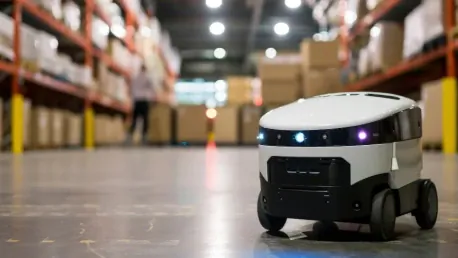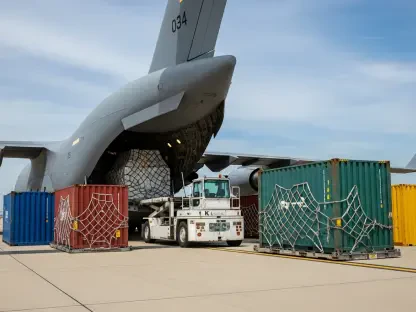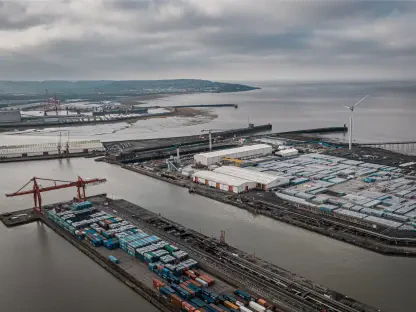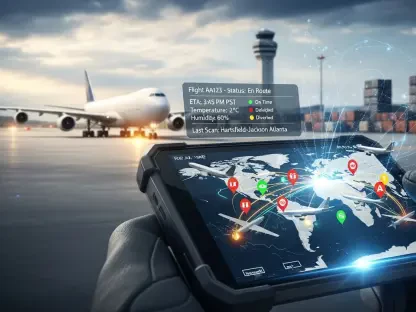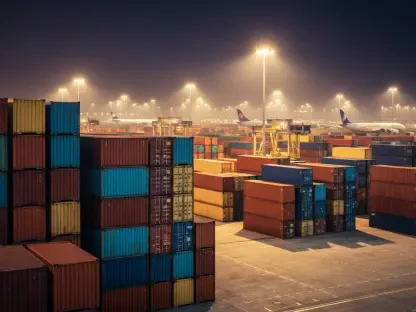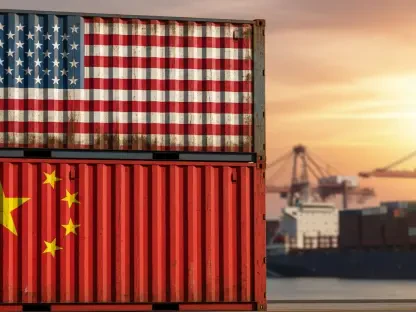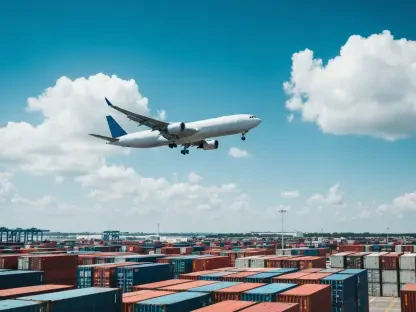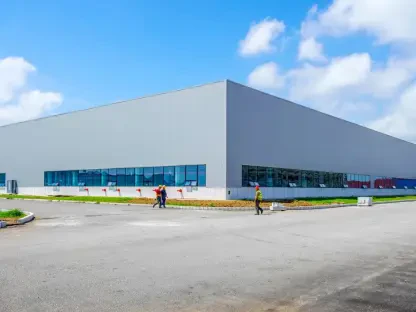The recent advancements in warehouse robotics have significantly transformed supply chain operations, unlocking efficiencies across various facets of logistics. The integration of AI-powered robots and autonomous mobile robots (AMRs) has become more prevalent, offering a glimpse into the future of automated supply chain management. These innovations have provided businesses with new ways to enhance efficiency, safety, and productivity in warehouse environments, particularly in the context of e-commerce fulfillment.
AI-Powered Robotics
The utilization of AI in robotics, exemplified by Ambi Robotics’ AI-powered robot, marks a significant development in warehouse automation. These robots leverage machine learning and intricate AI algorithms to improve the accuracy and speed of various warehouse tasks. By analyzing vast amounts of data, AI-powered robots can optimize their operations, making them more efficient and reliable, thus transforming how warehouses function.
AI-powered robots are adept at performing complex tasks that were challenging to automate previously. They can sort and pick items with high precision, which effectively reduces errors and increases throughput. The relevance of this technology is particularly pronounced in e-commerce fulfillment centers, where the speed and accuracy of order processing are crucial to maintaining customer satisfaction. Furthermore, the continuous learning and improvement capabilities inherent in AI-driven robots ensure they garner data and refine their algorithms with each task, becoming increasingly efficient over time. This self-improving capacity is a substantial advantage in dynamic warehouse environments where the demand for precision and speed is relentless.
Mobile Fulfillment Robots
The Kiva mobile fulfillment system, developed by Mick Mountz, Dr. Peter Wurman, and Prof. Dr. Raffaello D’Andrea, has revolutionized the goods-to-person picking concept by automating the picking process. Kiva robots, which navigate via sensors and execute missions through wireless communications, have become a global standard in e-commerce logistics, culminating in their acquisition by Amazon and bolstering the company’s same-day delivery capabilities.
Kiva robots have transformed warehouse operations by automating the retrieval of items from storage and delivering them to human workers for packing and shipping. This automation significantly reduces the time and effort required for order fulfillment, enhancing overall efficiency. Their success has spurred other companies to develop similar mobile fulfillment robots, which are now widely adopted across warehouses worldwide, aiding in meeting the escalating demands of e-commerce. The proliferation of these robots underscores their integral role in managing inventory and expediting the fulfillment cycle, which is pivotal for efficient warehouse management.
Dynamic Duo – Spot and Stretch
Boston Dynamics introduced Spot and Stretch robots to further enhance warehouse operations by autonomously performing tasks such as unloading and handling packages. Designed to streamline and complement human supervision, these robots offer a versatile solution for various warehouse activities.
Spot, a quadruped robot, is celebrated for its ability to navigate complex environments and execute tasks that necessitate mobility and flexibility. Stretch, explicitly designed for material handling, autonomously unloads trucks and relocates packages within the warehouse. The synergy between Spot and Stretch provides a multifaceted solution for warehouse automation, managing tasks from inventory to order fulfillment and boosting overall efficiency. Their capacity to handle diverse tasks significantly reduces operational bottlenecks and improves productivity in warehouse settings.
Robotic Systems in 3PL Operations
Third-party logistics (3PL) providers, such as Arvato, have adopted robotic systems to automate the goods receiving process, demonstrating the tangible benefits of reduced physical strain on workers and increased throughput. Stretch robots, for instance, autonomously unload containers, which not only enhances the speed of processing goods but also minimizes the likelihood of errors and goods damage.
The incorporation of robotic systems in 3PL operations revolutionizes the handling of goods, as robots can work incessantly, ensuring the rapid movement and processing of goods through the supply chain. This capability is especially critical during peak seasons when the demand for logistics services surges. By embracing robotic systems, 3PL providers can deliver superior service to their clients, adhering to tight deadlines and efficiently managing large volumes of goods. The augmented speed and precision of robotic systems are vital in maintaining competitive advantages in the logistics industry.
AI Foundation Models in Robotics
Ambi Robotics’ PRIME-1, an AI-powered foundation model, demonstrates the integration of deep learning and advanced AI algorithms to optimize robotic operations across diverse tasks in warehouse settings. PRIME-1 analyzes data in real-time to make autonomous decisions, enabling robots to execute tasks with high precision and efficiency, thus reducing the dependency on human intervention.
AI foundation models like PRIME-1 represent a significant breakthrough in warehouse automation. They enhance the performance and reliability of robots, enabling them to adapt to changing conditions and maintain consistent performance in dynamic environments. The deep learning capabilities embedded within these models allow robots to continually improve their task execution, making them invaluable assets in contemporary warehouse operations.
Mobile Manipulators and Cobots
The latest advancements in warehouse robotics have revolutionized supply chain operations, bringing efficiency improvements to various logistics processes. The more common use of AI-driven robots and autonomous mobile robots (AMRs) is offering a sneak peek into the future of automated supply chain management. These cutting-edge technologies have introduced businesses to new methods of boosting efficiency, safety, and productivity within warehouse environments, which is especially crucial for e-commerce fulfillment.
By leveraging AI-powered robots, companies can streamline their inventory management, quickly handling tasks such as sorting, packing, and shipping. These robots can operate around the clock without fatigue, reducing the need for human intervention and potentially lowering labor costs. Autonomous mobile robots navigate warehouse spaces with precision, avoiding obstacles and facilitating a seamless workflow. This minimizes errors, speeds up operations, and contributes to a safer working environment by mitigating risks associated with manual handling.
Moreover, incorporating these advanced robotic systems allows businesses to scale their operations efficiently. During peak seasons or surges in demand, these technologies ensure that warehouses can handle the increased workload without compromising performance. As e-commerce continues to grow rapidly, the importance of these robotic innovations cannot be overstated. They enable quicker order fulfillment, improve customer satisfaction, and establish a competitive edge in the market. The integration of AI and AMRs in warehouse logistics represents a significant leap forward in the field of supply chain management, setting a new standard for operational excellence.
